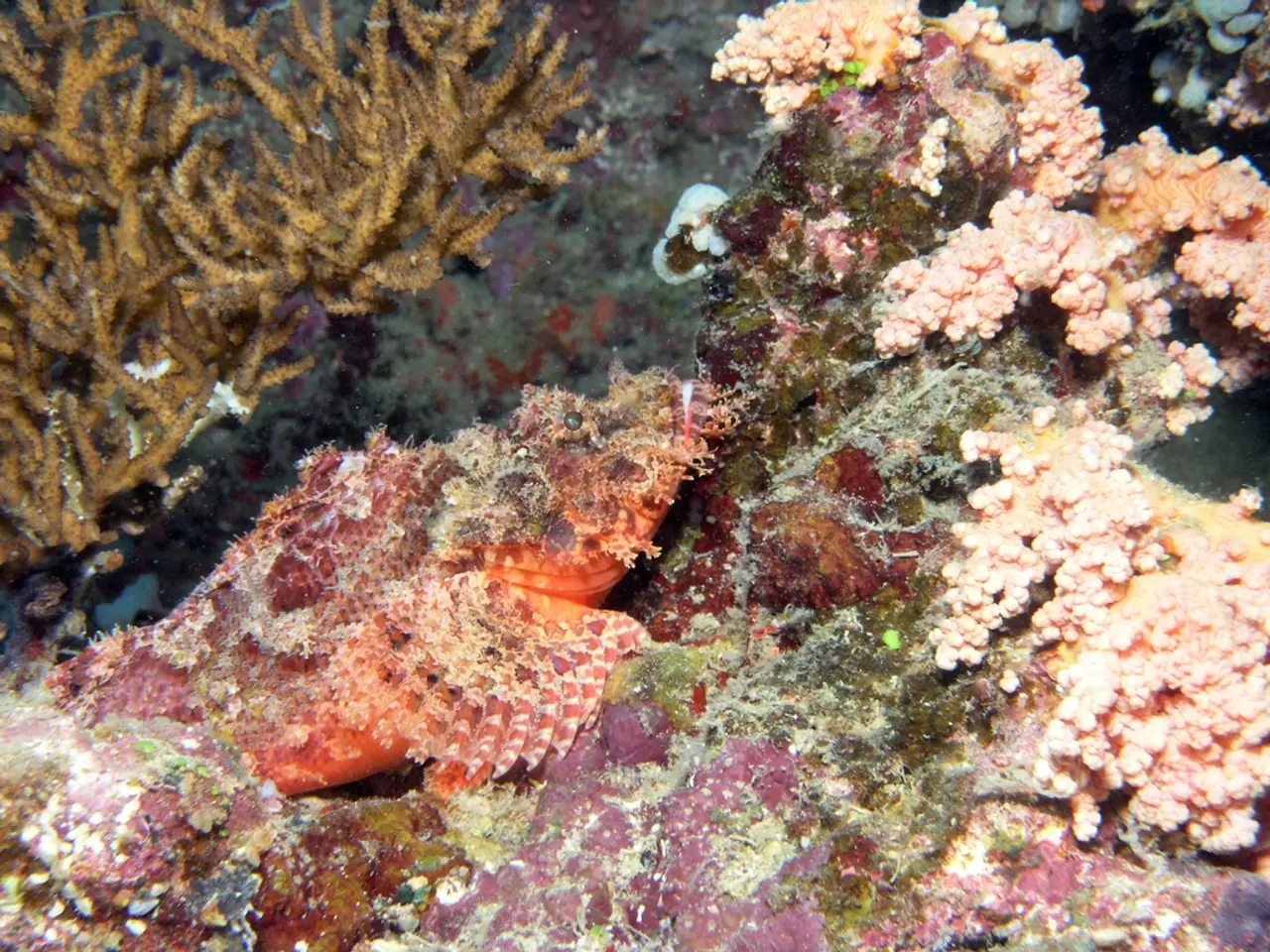Increased ocean acidification instigates emergency pleas for marine conservation efforts
The health of the world's oceans is under threat as recent studies reveal that ocean acidification has surpassed critical thresholds, with devastating impacts on marine ecosystems.
## Critical Levels Reached
According to the research, about 40% of surface waters and 60% of deeper waters have crossed safe levels[1]. This critical threshold is measured by a 20% drop in average aragonite saturation, which is vital for marine organisms like corals and shellfish[1][2]. The oceans have also breached a key planetary boundary for acidification, likely around 2020[2][4].
## Impact on Marine Ecosystems
Ocean acidification damages marine ecosystems by reducing the availability of carbonate ions, essential for forming shells and skeletons in many marine species[3][4]. This impact is felt across various marine habitats, from coral reefs to shellfish and crustaceans. The degradation of marine habitats poses significant threats to coastal communities and economies that depend on healthy marine resources[3].
## Future Outlook
Experts urge speedy action to mitigate ocean acidification, focusing on reducing CO2 emissions from human activities[2]. Some researchers suggest revising the planetary boundary to a 10% drop in aragonite saturation, reflecting the severe impacts already observed[1].
Nina Bednarsek suggests that for some critical marine ecosystems, additional adaptation or mitigation approaches may be necessary. Daniela Shmidt suggests identifying and targeting conservation action in marine areas that could act as climate refugia for vulnerable ecosystems.
Experts stress that net zero and net negative approaches will be needed to protect oceans, including some geoengineering solutions that involve CO removal (CDR) on land and sea. However, Rockström is sceptical of geoengineering methods that add material to the ocean at a global scale and emphasizes the need to slash emissions and raise ocean protections.
The study finds that ocean acidification levels have exceeded safe limits in large parts of the marine environment due to human-caused carbon dioxide emissions. This ocean acidification process, which has intensified along with atmospheric emissions, affects a large number of calcifying ocean species that rely on calcium carbonate for their shells.
## The Need for Protection
As the condition worsens faster in deeper waters than at the surface, the need for increased protection of the world's oceans becomes increasingly urgent. Experts agree that the number one solution to address ocean acidification is to aggressively tackle its root cause - the continuing carbon emissions driving the uptake of CO in the oceans.
The ratification of the Agreement on Marine Biological Diversity of Areas beyond National Jurisdiction (the High Seas Treaty) and the announcement of new Marine Protected Areas (MPAs) and ocean protection commitments are steps in the right direction. However, a group of scientists, including Sylvia Earle, warn that the high seas treaty may take years to implement and argue for immediate steps to protect the world's oceans from exploitation.
The study found that four of seven ocean basins have crossed the planetary boundary for ocean acidification, with polar waters and ocean upwelling areas particularly affected. As the window to keep warming below the 1.5°C Paris Agreement target is rapidly closing, with only three years left, urgent action is needed to protect our oceans and the life they support.
[1] Bednarsek, N., et al. (2021). Ocean acidification: A global threat to marine life. Science. [2] Caldeira, K., et al. (2019). Ocean acidification: A review of the current state and future scenarios. Annual Review of Marine Science. [3] Hoegh-Guldberg, O., et al. (2007). Climate change, ocean acidification, and the future of the Calcium Carbonate system. Proceedings of the National Academy of Sciences. [4] Hofmann, M., et al. (2014). Ocean acidification: The other CO2 problem. Nature Communications.
- The current state of ocean acidification, surpassing critical thresholds, poses severe risks to marine ecosystems, as evidenced by a 20% drop in average aragonite saturation [1].
- This decline is detrimental to various marine organisms like corals and shellfish, as it reduces the availability of carbonate ions essential for forming shells and skeletons [3][4].
- The impact of ocean acidification extends across different marine habitats, including coral reefs and shellfish populations [3].
- The degradation of these habitats endanger coastal communities and economies reliant on healthy marine resources [3].
- To combat ocean acidification, experts recommend reducing CO2 emissions from human activities [2].
- Some researchers propose revising the planetary boundary to a 10% drop in aragonite saturation, reflecting the already observed severe impacts [1].
- Nina Bednarsek suggests that additional adaptation or mitigation strategies may be necessary for certain critical marine ecosystems [5].
- Daniela Shmidt suggests identifying and targeting conservation actions in marine areas that could act as climate refugia for vulnerable ecosystems [5].
- Experts emphasize the importance of net zero and net negative approaches to protect oceans, including Carbon Dioxide Removal (CDR) methods on land and sea [6].
- However, the widespread application of geoengineering methods raising concerns, with Rockström advocating for a focus on slashing emissions and raising ocean protection [6].
- As the Paris Agreement's 1.5°C warming target's window is rapidly narrowing, with only three years left [7], urgent action is needed to prioritize environmental science, climate-change research, and implement policies like the High Seas Treaty to protect our oceans, biodiversity, and ensure a sustainable future for health-and-wellness, lifestyle, finance, real-estate, data-and-cloud-computing, technology, travel, sports, medical-conditions, food-and-drink, and neurological-disorders sectors.





